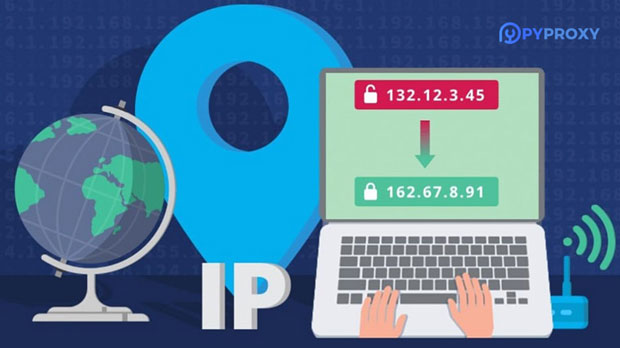socks5 proxy servers have become a popular choice for internet users who prioritize privacy, speed, and security. These servers work by acting as intermediaries between a user's device and the internet, offering the ability to hide the user's real IP address and encrypt traffic. However, the best socks5 proxies stand out because of certain key features that elevate their performance and ensure they meet the needs of users. In this article, we will explore the main characteristics that define the best socks5 proxy servers, including speed, security, reliability, and ease of use. By understanding these features, users can make informed decisions when selecting a SOCKS5 proxy service to suit their needs. 1. Speed and PerformanceOne of the most important features to look for in a SOCKS5 proxy server is speed. Users rely on fast internet connections for tasks such as browsing, streaming, and online gaming. A high-quality SOCKS5 proxy should be able to route traffic efficiently without introducing significant latency or reducing the overall speed of the internet connection.- Low Latency: Good SOCKS5 proxies minimize delay. A server with low latency ensures faster response times, allowing users to experience seamless browsing, gaming, or streaming.- Bandwidth Capacity: The best SOCKS5 proxy services are equipped with sufficient bandwidth to handle high-volume data transfer without throttling. This is particularly important for activities like downloading large files or streaming in high definition.- Optimized Routing: High-performance proxies use intelligent routing techniques to select the best available route for traffic, reducing delays and maintaining a smooth browsing experience.2. Enhanced Security and AnonymitySecurity is a critical concern for many internet users, especially when dealing with sensitive data. The best SOCKS5 proxy servers offer robust security features to protect user privacy and ensure that internet traffic remains encrypted.- Encryption: While SOCKS5 proxies do not inherently encrypt data, they allow users to pair the proxy with encryption protocols like SSL/TLS to secure the traffic. This ensures that sensitive information, such as passwords and credit card details, remains private.- IP Masking: The primary function of any SOCKS5 proxy is to mask the user's real IP address. A good proxy server provides reliable and effective IP masking, making it difficult for websites or third parties to track the user’s online activities.- No Logs Policy: For maximum anonymity, top-tier SOCKS5 proxies adhere to a strict no-logs policy, ensuring that no records of user activity are stored. This is especially crucial for users who want to protect their privacy and avoid tracking or surveillance.3. Reliability and UptimeReliability is another critical factor when selecting a SOCKS5 proxy server. Users expect a proxy service that consistently delivers high performance without interruptions. The best SOCKS5 proxies boast high uptime and dependable service, ensuring that users can rely on the proxy for various online activities.- Server Availability: A good SOCKS5 proxy provider should offer a network of servers distributed across multiple regions, ensuring that users can always find a server with minimal congestion. More servers also provide better options for bypassing geographic restrictions and censorship.- Minimal Downtime: A high-quality SOCKS5 proxy service will have minimal downtime. Frequent server outages can be frustrating and disruptive, especially when users depend on the proxy for privacy or accessing content from restricted regions.- Redundancy Systems: Many top-tier proxy services implement redundancy measures, such as failover systems, to ensure continuous service even in case of server failure. This guarantees that users won’t experience significant interruptions during critical tasks.4. Compatibility with Different Protocols and ApplicationsA good SOCKS5 proxy server should be versatile, offering compatibility with a wide range of protocols and applications. SOCKS5 is a flexible protocol that supports various types of internet traffic, including web browsing, email, P2P file sharing, and gaming.- Broad Protocol Support: The best SOCKS5 proxies support multiple protocols such as HTTP, HTTPS, and FTP, allowing users to use the proxy for different purposes without any issues. This is particularly useful for users who need the proxy for a variety of online activities.- Support for Popular Applications: SOCKS5 proxies should be compatible with commonly used applications like web browsers, torrent clients, and gaming platforms. This ensures users can easily configure the proxy for their specific needs, whether it’s for anonymous browsing or accessing geo-restricted content.- Platform Compatibility: The best SOCKS5 proxy services are designed to work across various platforms, including Windows, macOS, Linux, Android, and iOS. This provides flexibility for users who want to protect their online activities on different devices.5. Ease of Use and ConfigurationA user-friendly interface and easy configuration are essential for users who are not tech-savvy. While SOCKS5 proxies offer advanced functionality, the best services also ensure that users can set up and use the proxy with minimal hassle.- Simple Setup Process: High-quality SOCKS5 proxy services provide clear instructions or automated setup tools that make it easy to connect to the proxy. Whether it’s through a browser extension, software client, or manual configuration, the process should be straightforward and efficient.- User Interface: A well-designed user interface (UI) ensures that users can easily manage settings, monitor server status, and switch between different servers without confusion. An intuitive UI enhances the overall user experience.- Customer Support: Reliable customer support is essential when using a proxy service. The best SOCKS5 proxies offer responsive support teams that can help users with troubleshooting, setup issues, or any technical problems that arise during usage.6. Affordable Pricing PlansWhile many users are willing to pay for high-quality services, pricing remains an important factor when choosing a SOCKS5 proxy. The best providers offer affordable pricing plans that align with the features and quality of service they provide.- Transparent Pricing: A top-tier SOCKS5 proxy provider should offer clear, straightforward pricing without hidden fees. Users should be able to see exactly what they’re paying for, whether it’s a subscription plan or a pay-as-you-go option.- Flexible Plans: Many users may have different needs when it comes to proxy usage. The best services offer flexible pricing plans, such as monthly or yearly subscriptions, to cater to a variety of budgets and usage requirements.- Free Trial or Money-Back Guarantee: Some of the best SOCKS5 proxy services offer a free trial or a money-back guarantee, allowing users to test the service before committing to a long-term plan. This provides peace of mind, knowing that users can receive a refund if the service doesn’t meet their expectations.7. Geo-Targeting and Bypass RestrictionsOne of the most appealing features of SOCKS5 proxies is the ability to bypass geo-restrictions and censorship. Users can access content that is normally unavailable in their region, such as streaming services or websites that are blocked by their government or network administrator.- Multiple Locations: The best SOCKS5 proxy services offer servers in multiple locations worldwide. This allows users to select the best server to bypass regional restrictions, access international content, or maintain anonymity.- Unblocking Capabilities: Top-tier SOCKS5 proxies are capable of unblocking popular streaming services, websites, and platforms that might be restricted due to geographic location. This is particularly valuable for users who want to access content in regions like the US, UK, or Europe.ConclusionThe best SOCKS5 proxy servers combine high speed, security, reliability, and ease of use to provide a superior online experience. Whether it’s for anonymous browsing, accessing geo-restricted content, or securing sensitive data, SOCKS5 proxies offer an effective solution. By choosing a provider that prioritizes these key features—such as performance, security, flexibility, and support—users can ensure that they are making the most of their proxy service. Ultimately, understanding what makes a SOCKS5 proxy server stand out will help users make an informed decision and enjoy a smoother, more private online experience.
Dec 26, 2024






















































